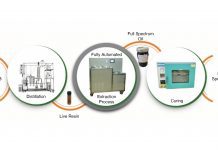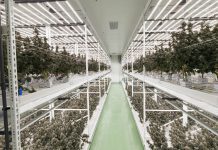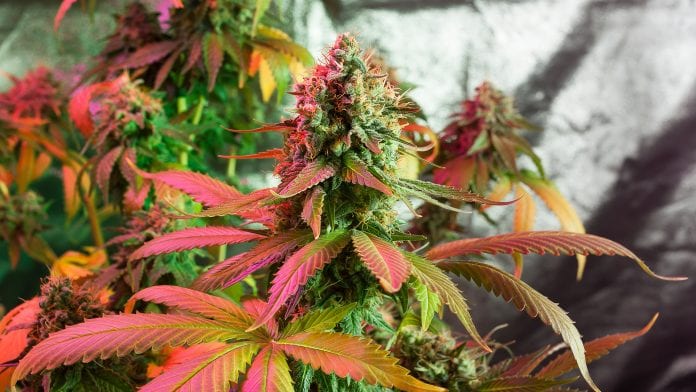
George Stantchev, PhD, of PURE5 Extraction, explores why it is important to preserve native cannabis terpenes for extraction.
Terpenes are aromatic molecules that evaporate easily and readily announce themselves to the nose. Various researchers have emphasised the pharmacological importance of terpenes, or terpenoids, which form the basis of aromatherapy, a popular holistic healing modality. The compelling fragrance of cannabis and particular flavours are determined by the predominant cannabis terpenes in a strain.
There are over 3000 terpenes in nature and 400 of them have been found in the cannabis plant, where 70 of them are identified as cannabinoids. However, only a few of these odoriferous oily substances appear in amounts substantial enough to be nose worthy. Among them are monoterpenes, diterpenes, and sesquiterpenes, which are characterised by the number of repeating units of a 5-carbon molecule called isoprene, the structural hallmark of all terpenoid compounds.
The terpenes in cannabis have given the plant an enduring, evolutionary advantage – they are the natural hormones of the plant. During the vegetation of the plant the terpenes change from repelling insects and animal grazers, and preventing fungus to attracting pollinators and male plant pollination. In a similar manner the terpenes, also known as essential oils, elevate human emotions and very often cause subliminal effects. That is why essential oils are a base of most perfumes and aromatherapy concepts.
In many cases nature is our best formulator when talking about the effect of various plants and cannabis strains to human health. That is why finding a process that preserves natural strain specific extracts without degrading or creating byproducts is the main target of PURE5 Extraction.
The ‘entourage effect’
Out of the 70 known cannabinoids that occur in the cannabis plant each of them has specific functions in stimulating certain cells. For example, CBD stimulates collagen, CBG stimulates the stem cells, THCV stimulates the peripheral nervous system, and THC stimulates the central nervous system, etc.
Collectively the effect of all cannabinoids, terpenoids, and flavonoids define the so-called ‘entourage effect’ of the plant. The entourage effect is a process whereby these molecules in the plant all work together to create pharmacological and psychoactive effects. The reason why the entourage effect is so important is because the terpenes by themselves modulate and increase the effect of the cannabinoids, meaning a proper combination of cannabinoids and terpenes can amplify, prolong or speed up the medical effects of the plant.
How much loss is typically seen with standard terpene extraction protocols?
Тhe main terpene extraction process that has been used for centuries is steam distillation. Since the steam does not dilute the terpenes, but helps them to evaporate and condensate, the extraction of terpenes with steam is a side effect, i.e. the practical yield is very low, but it is compensated by the cost and simplicity of the extraction. For example, to extract 1kg of rose oil by steam you need 3,000kg of fresh flower, and if solvent extraction is used it is around 500kg of fresh flower to produce the 1kg extract. Therefore, the solvent extraction can increase the yield about six times.
That same statistic can be applied many aromatic herbs such as lavender, mint, and sage. The amount of terpenes in aromatic plants is around 0.1 to 0.5%, which is also typical for the wild cannabis sativa. In well cultivated sativa the terpenes can be increased up to 2.5%, and up to 5% in cultivated varieties of indica.
How do we compare to other processes, like subcritical CO2 and steam distillation?
Other solvent extractions sometimes used in terpene extraction are hexane, CO2 and hydrocarbons. 90% of the extraction of terpenes is done in the fresh flower stage, where the flowers are in full bloom and the terpenes at their strongest, unaffected by other factors during drying, such as sunlight and heat.
Currently, the lowest cost solvent extraction on fresh flowers is through hexane or similar water insoluble solvents such as pentane or heptane.
Hexane extraction lasts for about an hour with agitation, and the solvent is drained and removed in a rectification tower. The solvent evaporation is at around 68 degrees C, and since most of the terpenes are preserved in this initial stage the extract is very thick and known as ‘concrete’ (a form of crude). Since the hexane crude extract is rich in lipids and fats, further refinement is necessary with a lipophilic solvent such as ethanol. After a dilution and freezing at around -40 degree C for 48 hours, winterisation or filtration of the extract is needed to isolate the essential oil.
After the winterisation the ethanol should be evaporated. Given that the ethanol boiling point is around 78 degrees C, and the first terpene evaporation point is at around 105 degree C, there is a substantial loss of the most volatile terpenes. They escape together with the evaporated ethanol, which also contaminates the ethanol, and further solvent refinement is needed.
On the other hand the use of hexane is not intended for a food grade product. The hexane extraction is mostly used in the fragrance and pharma fields where the hexane residues affecting the taste are not considered critical. In the US some of the cheap CBD isolates are produced using hexane.
The use of CO2 in extraction of terpenes has been limited to extracting from dry flower. Extracting fresh flowers with high water content is a challenge for the CO2 process since the aggressive CO2 solvent, when it is in a liquid state, reacts with the water components and converts to an acid. The minimum condition to put CO2 in a liquid state in order to extract at reasonable temperature is over 70 atm (standard atmosphere pressure). This is the same atmospheric condition as on the planet Venus.
In the diagram below a range of organic substances are shown along with bars of the solubility of various solvents. Understanding the solvent is of major importance for extraction of full spectrum resin. There are oil soluble compounds, alcohol soluble compounds and water-soluble compounds in the plants, which is why it is important to select your solvent base in regards to what compound you want to be extracted.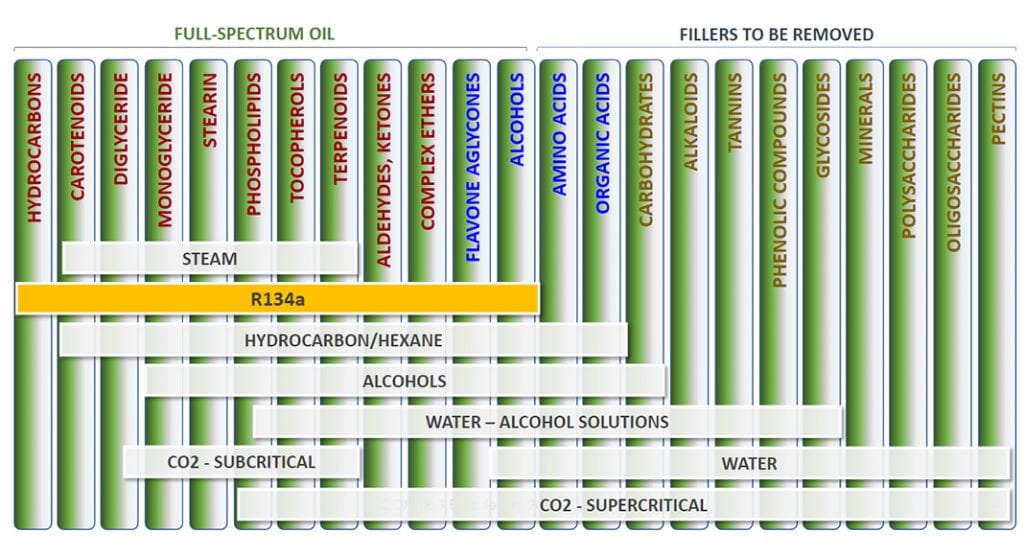
The first issue with CO2 when we look at the diagram below is the fact that in supercritical mode terpenes are not extracted. Therefore, the extraction of terpenes will need to be done in subcritical mode.. In subcritical mode the CO2 is a very low, dense solvent that requires time and proper pressure to be effective. In order to achieve a reasonable yield for terpenes in subcritical mode an extraction can continue for up to five hours, whereas using hydrocarbons takes only 15 minutes. This is why CO2 is not too popular in the fragrance and flavour industry, which are the leading industries in terpene extractions.
We see a similar problem with ethanol, where the major terpene classes are not extracted due the polar nature and high boiling evaporation temperature preventing good separation. Not to forget that both CO2 and ethanol are aggressive polar solvents which oxidize some of the components while creating by-products. That is why it is essential that an extraction of volatile compounds like terpenes is extracted in very inert environments, without resident oxygen or air flow, and at normal temperatures that do not convert or degrade those compounds.
What are the safety aspects of fluorocarbon?
As discussed earlier, there is a big problem today in the cannabis extraction industry. There are many variants of oil soluble compounds with medicinal values in the cannabis plant, and due their consistency they cannot be extracted together. Thick oils such as the cannabinoids are extracted one way, and the volatile oils another. Every one of the major extraction methods has a core flaw in their process, whether its high pressure, high temperature, dangerous, toxic solvents or solvents that create by-products. Any one, or any combination of these, is very destructive to the plant profile and the usual extract received is called ‘crude oil’ as it has a lot of unwanted components inside which require extensive post processing.
PURE5 Extraction with R-134a
PURE5 Extraction uses a low pressure and room temperature extraction, which extracts the terpenes and the cannabinoids in the plant without all the unwanted components such as fats, lipids, waxes or chlorophyll.
The solvent used is called R-134a, which is a fluorinated hydrocarbon also known as Freon. In the past Freons were used in cleaning, cooling, heating, aerosols, additives to breathing mixtures, purification, and more, in multiple industries. There are also freons like R11 and R22 that are outdated due the negative effect on the ozone layer. R134a does not cause the ozone layer depletion and ir is recognised as Generally Recognized As Safe (GRAS) by the FDA, and is widely used in aerosols as an agent for oral drug delivery.
Compared to hydrocarbon and isobutane, R134a is human and operation safe. It isnon-toxic, non-flammable and has no ozone depletion potential. It is a non-polar solvent, similar to hexane and butane without the high combustion danger they possess, and it extracts the oil soluble fractions very fast, i.e. the terpenes and resins.
Due to its inert and water insoluble characteristics it can easily extract fresh products with large water content. The small molecule size penetrates the plant tissue easily and maintains the PH level throughout the process – delivering the undamaged terpene and cannabinoid profile in oil. For this reason, R134a is very well suited for pharma applications. Since the boiling point is at -30 degree C, it can be easily separated from the extract so the extract can be free of residues.
The small non-polar molecule size and the inert nature of the TFE solvent penetrates the plant tissue well and extracts thoroughly the oil soluble fractions. When extraction is performed at room temperature conditions the extraction process is seamless, and the full spectrum resin is delivered from the plant.
Full terpene profile is collected without degradation of components and it is easily separated from the solvent, making it a popular choice over hexane in the food industry. The solvent also makes the extraction of terpenes fast and clean of byproducts. For example, if CO2 in subcritical mode needs five hours to extract limited terpenes, the R134a needs only 15 minutes for full terpene profile extraction.
What is PBX Process?
PURE5 Extraction is introducing a line of Pure Botanical Extracts (PBXTM), which are hemp terpenes extracted from fresh flowers in such a way that ensures the terpene profile native to the original cultivar is preserved.
The terpenes are captured using a non-destructive botanical extraction process that concentrates them in an unaltered profile, and suspends them in other natural oils from the plants.
The highest quality hemp or cannabis flowers are selected and subsequently coupled with the Pure Botanical Extraction (PBX) process to deliver the highest terpene concentrations. The process can be custom tuned to extract only terpenes and suppress some of the cannabinoids, such as the psychoactive component THC.
The cannabis cultivars are uniquely grown to boost the full terpene spectrum in the flower, then selectively extracted to isolate major and minor native terpenes. The extraction process employs a low-pressure, room-temperature, non-polar fluorocarbon solvent allowing us to capture every potential terpene along with all elements and ketones.
Myrcene, caryophyllene, humulene, pinene, and linalool are more common amongst hemp flowers, however, the quantity present in Lifter makes this a very complex flower profile yielding superior entourage effects. Lifter is just that – it will lift you up!
The plant profile contains terpenessuch as trans-ocimene (mint, parsley, basil, and mango), terpinolene (pine, nutmeg, and lilacs), and limonene (citrus, fruits, and juniper) which stand out amongst the typical hemp plant terpene profiles.



The flower can be extracted for terpenes or for full spectrum oil reaching terpene levels of anywhere between 5% and 33%. The live resin extracted terpene profile can be approximately 30 times more concentrated, and in the full spectrum oil up to four times more concentrated. The additional two terpenes detected in the extract were below the detection threshold in the flower however, were detected in the extract after being concentrated. Since the extraction is carried out at room temperature there is no destruction of existing terpenes and no new by-products created in the process.
We further isolate the terpene to over 60% concentration and, in that case, the extract is 100 times more concentrated than the original plant.
PBX terpene oils can be added to all hemp-derived products, for example distillate, isolate or crude extracted with other means, in order to maintain the original terpene profile and enhance flavour and ensemble effects.
Our terpene extract is supplied with a chain of custody back to the original cultivar. Additionally, our products are third-party tested for cannabinoids, terpenes, residual solvents, inhalable microbial contamination, and pesticides.
Most botanically sourced terpenes are extremely concentrated; however, they are often suspended in alcohol meaning these solvents are, therefore, in cannabis extract formulations. PBX delivers all the components of the flower we want and none of the by-products that widely used solvents such as CO2 or ethanol will create due their aggressive nature.
As explained above, due the aggressive nature of some polar solvents during extraction and access to oxygen, they oxidize some of the constituents, which limits the antioxidant activities of the extracts produced and lowers their medicinal value, as well as increases the PH. The high medicinal value of a botanical product is directly related to their ability to inhibit free radicals in the body.
In addition, all cold ethanol extracts that are not processed with proper winterisation are still rich in waxes and long sugar lipids that limit the ability of the terpenes to absorb and release potent aromas.
Who we are?
At PURE5 Extraction (powered by COMERG), we design and manufacture cost and process-optimised extraction systems and applicable post-processing stages targeting specific end products. COMERG is committed to offering the fastest, safest, and most economical extraction process for Cannabis sativa oils named Pure Botanical Extraction (PBXTM) standard.
Our technology originated from building machines for fragrance and flavor production in Europe utilising various solvents as hexane, steam, ethanol and R134a. This technology alone and with the combination of ethanol has been used for extracting various herbs. The consistency and the economics have been proven over a couple of decades. Based on that vast experience, COMERG developed equipment differentiated by processing capacity.
If you want to find out more about PURE5’s unique extraction process, read more here: PURE5 Extraction.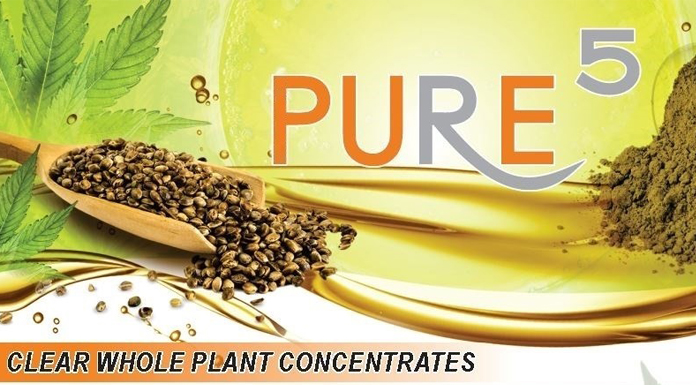
Dr George Stantchev
CEO
COMERG LLC
george@comerg.com
+1 (602) 992-0744
www.thepure5.com



